An image of a red fox moving through a woodland, destroyed to make way for an industrial site, has taken the top prize in British Wildlife Photography Awards 2023.
More than13,000 images were submitted into this year’s competition, with amateur and professional photographers competing for the £5,000 grand prize.
The winning photographs
Overall winner
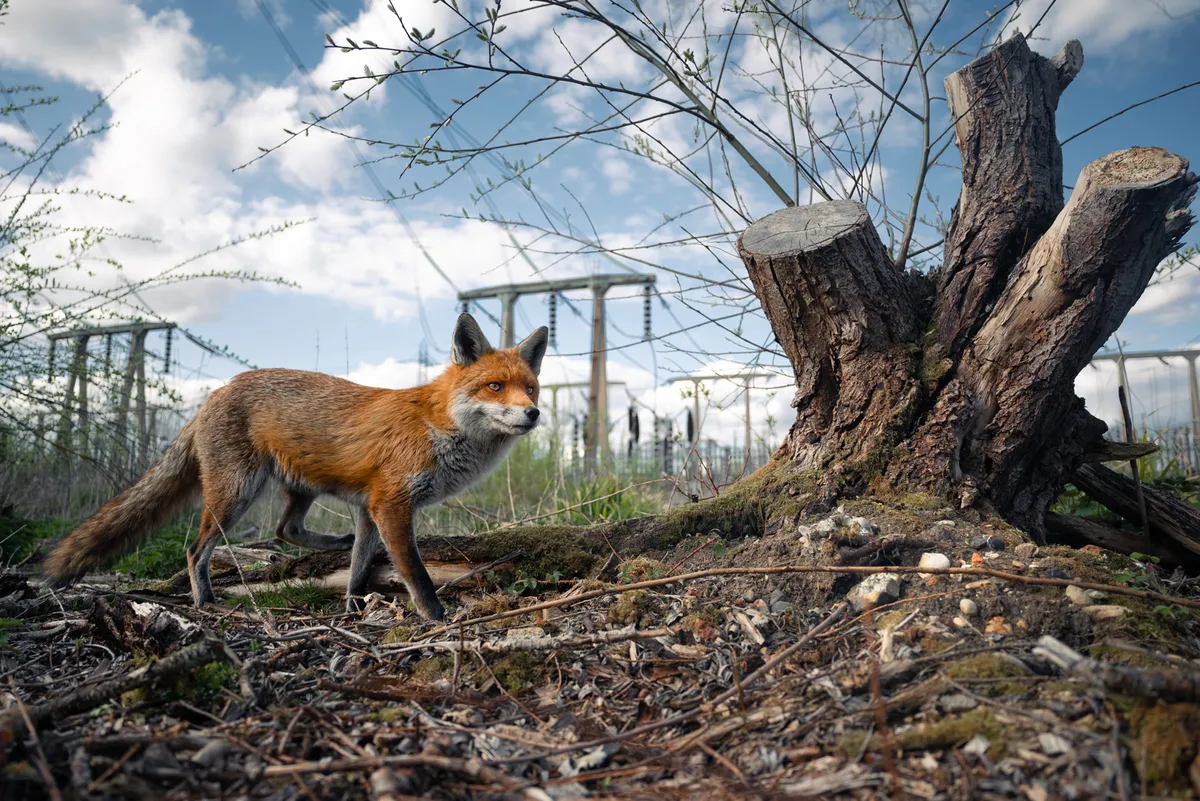
A Look to the Future... by Charlie Page
"I knew this area was reliable for foxes, and I wanted a shot with the industrial backdrop," said Charlie Page. "One day when setting up my camera with a remote shutter release, a fox approached from my left. Hesitant about what to do, I stayed still, and surprisingly the fox stopped right in my frame. I took the shot but was confused why it had come so close. In hindsight, this encounter probably tells the story more than the photo itself. Wildlife has become used to us encroaching on them. I think the felled tree and longing look on the fox’s face portray this tragedy perfectly. I hope that all wildlife photography doesn’t look like this in years to come."
Tech: Nikon Z5 with Nikon 24-50mm f/4-6.3 lens. 24mm; 1/640th second; f/4; ISO 200.
Animal behaviour winner
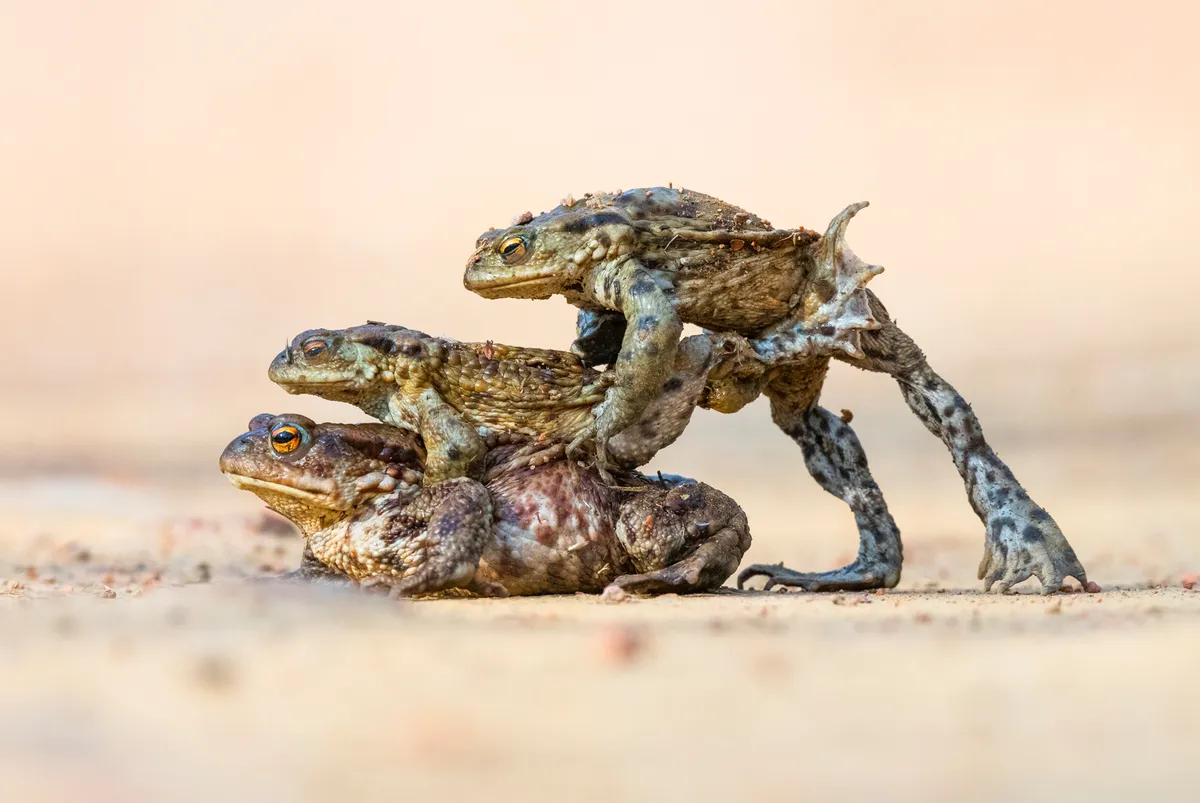
Hitching a Lift by James Roddie
"The common toad migration to their spawning grounds can be a spectacular event to watch," says James Roddie. "As the large females make their way to the water, the smaller males approach them to try and ‘hitch a lift’. It can result in some amusing behaviour, as multiple males will often try to mount the same female. This image was captured just as one of the males tried to push away another. It can be quite a difficult thing to photograph, as this is one situation when toads move surprisingly quickly.
Nikon D850 with Nikon 500mm f/5.6 lens. 500mm; 1/1,600th second; f/11; ISO 2,200.
Hidden Britain Winner
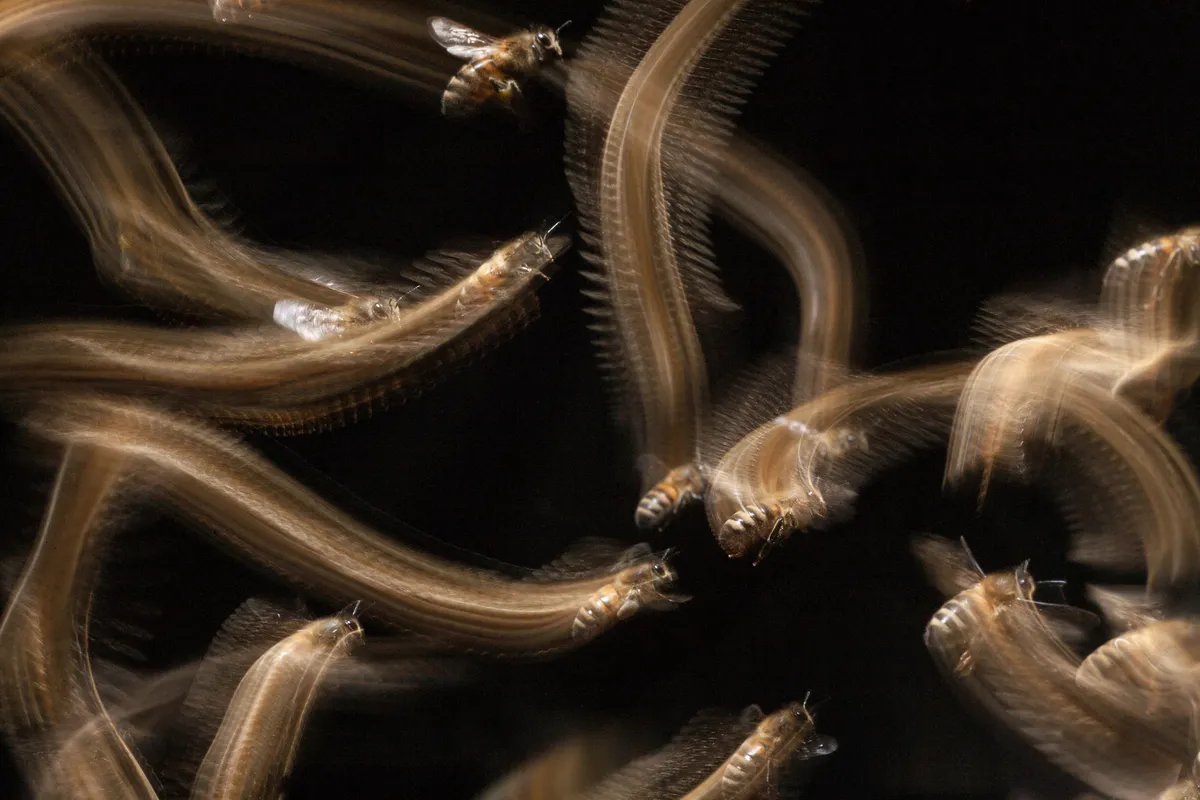
Honey Bee Flight Trail by John Waters
Honey bees leave ‘light trails’ as they approach their hive entrance. This shot was taken in a small wildlife-friendly garden in Bristol where my partner keeps bees. I spent hours watching the bees, trying to work out how I could show their comings and goings in a way that would convey a sense of movement – their ‘busyness’. I used a slow shutter speed (0.3 secs) and second-curtain flash to ‘freeze’ the bees after they had made their light trails.
Tech: Canon 5D with Canon 100mm f/2.8 Macro lens. 100mm; 1/4th second; f/32; ISO 160.
Botanical Britain winner

A Poet’s Lunch by Matt Doogue
A 4:30am alarm to get to Devilla Forest for some early morning butterflies resulted in me finding my first ever Sundew. It was even better that it had prey! Then, when I discovered it had actually snared a horsefly, I was extremely excited. There’s something poetic about the piece: the horsefly, known for biting us, was ‘bitten’ by the Sundew. This is a handheld, stacked image consisting of thirty images to ensure complete focus of the scene.
Tech: Canon 6D Mark II with Canon 100mm f/2.8 Macro lens. 100mm; 1/320th second; f/2.8; ISO 100. Stacked.
Black & White Winner
Great Mell Fell by Matthew Turner
"I spent a good few hours on this foggy morning exploring the wooded eastern contours of Great Mell Fell in the Lake District. This is a strange and otherworldly place, with gnarled bark, distorted branches and dank moss everywhere. I clambered through the jumble of fallen trees and eventually stumbled upon this decaying specimen, which to me looked like a claw reaching out from the decomposing pile of tree carcasses beneath. I used my tripod to avoid any camera shake due to the dark and dingy conditions which suited the scene perfectly."
Tech: Sony a7R with Sony 16-35mm f/4 lens. 26mm; 1/30th second; f/8; ISO 250.
Coast & Marine Winner
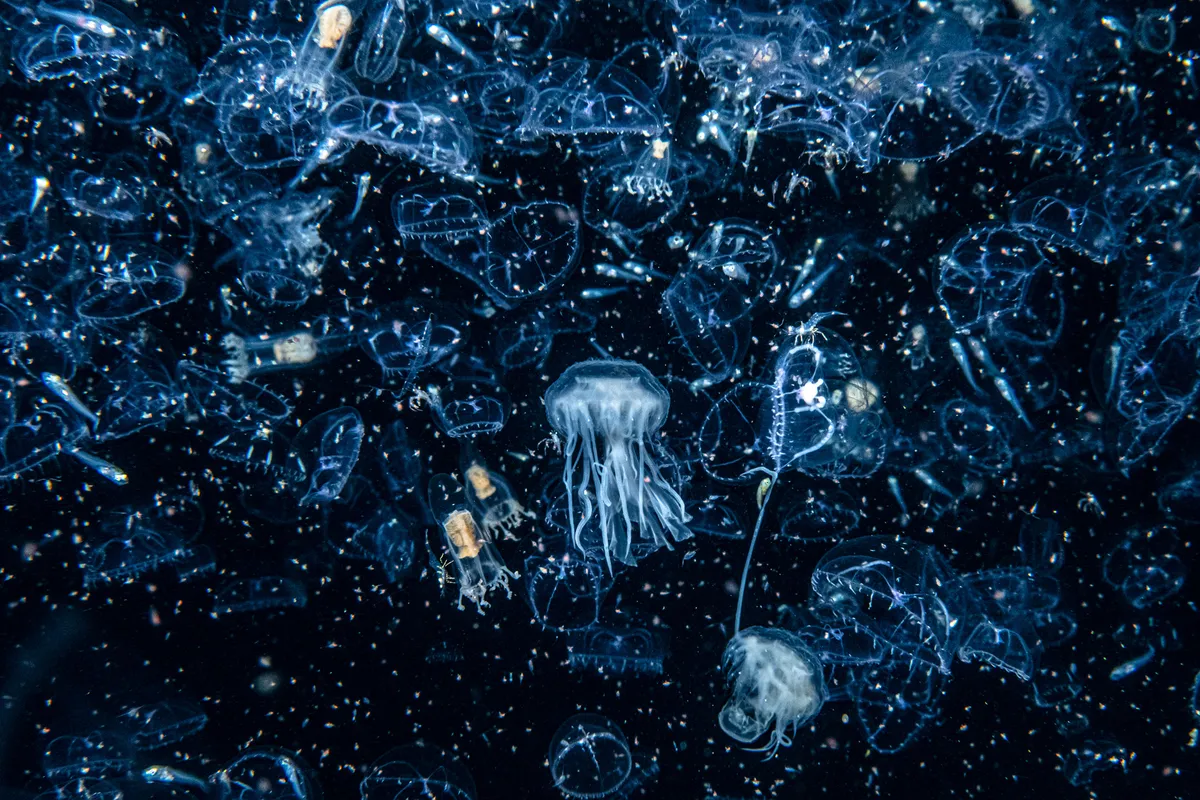
Welcome to the Zoo (plankton) by Henley Spiers
"One night in Shetland, I came face to face with plankton on a scale unlike anything I had experienced before, snorkelling amidst a plankton bloom so thick that, at times, I was unable to see through it. To the naked eye, it looks like a million peach-coloured spheres, as if the contents of a bean bag had spilt over the sea, but my macro lens reveals a mass of tiny organisms.
"Plankton takes two forms: the first is phytoplankton, which is made up of plants and forms the base of the food chain. Zooplankton, made up of animals, sits on the next rung up. I am in the midst of the zoo here – a rich tapestry of tiny animals pulsating all around. Some are too microscopic to recognise, but others I can discern. Larval stage crustaceans abound, some swimming through the darkness, others clinging to the life rafts offered by broken-off seaweed. This plankton soup has attracted an army of jellyfish, who feast upon the buffet of miniature life."
Tech: Nikon D850 with Nikon 60mm f/2.8 lens. 60mm; 1/60th second; f/29; ISO 2,000.
Wild Woods Winner
On the remains of an Iron Age hill fort on Badbury Hill in Oxfordshire, Badbury Clump is an area of wonderful beech woodland, carpeted in bluebells each spring. On this particular morning, thick fog had descended, creating a magical, ethereal atmosphere, and it was a wonderful experience to be present in the woods with the camera in hand. Shooting into the light, I was struck by the sense of endlessness as the beech trees eerily dissolved into the silent, misty obscurity. File name: Mystical_forest.tif
Canon 5D Mark III with Canon 24-105mm f/4 lens. 85mm; 1/13th second; f/11; ISO 100.
Animal Portraits winner
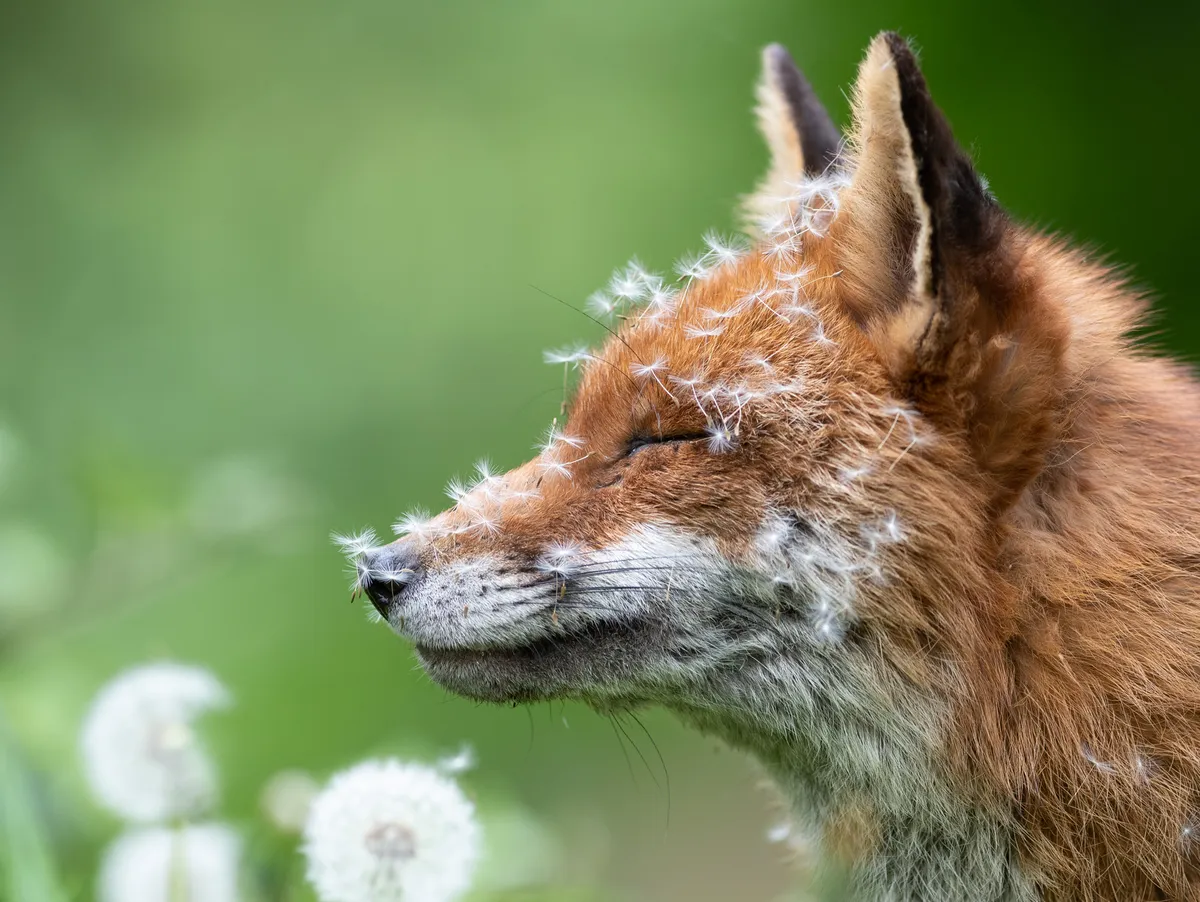
Sleeping With Dandelions by Lewis Newman
"After spending a lot of time with this particular vixen, she began to learn I was not a threat. This gave me some great photographic opportunities. I got to know her routine, and as the wildflowers began to grow, I would find her curled up amongst them. As the dandelions began to open there were a couple of days when she would wake up covered in them.
"Although she got used to my presence, if I were to move too fast or drop anything she would immediately leave. Later on in spring, I was blessed with her bringing her cubs to me and have watched them grow ever since."
Tech: Nikon D500 with Nikon 300mm f/2.8 lens. 300mm; 1/800th second; f/4; ISO 640.
Habitat winner
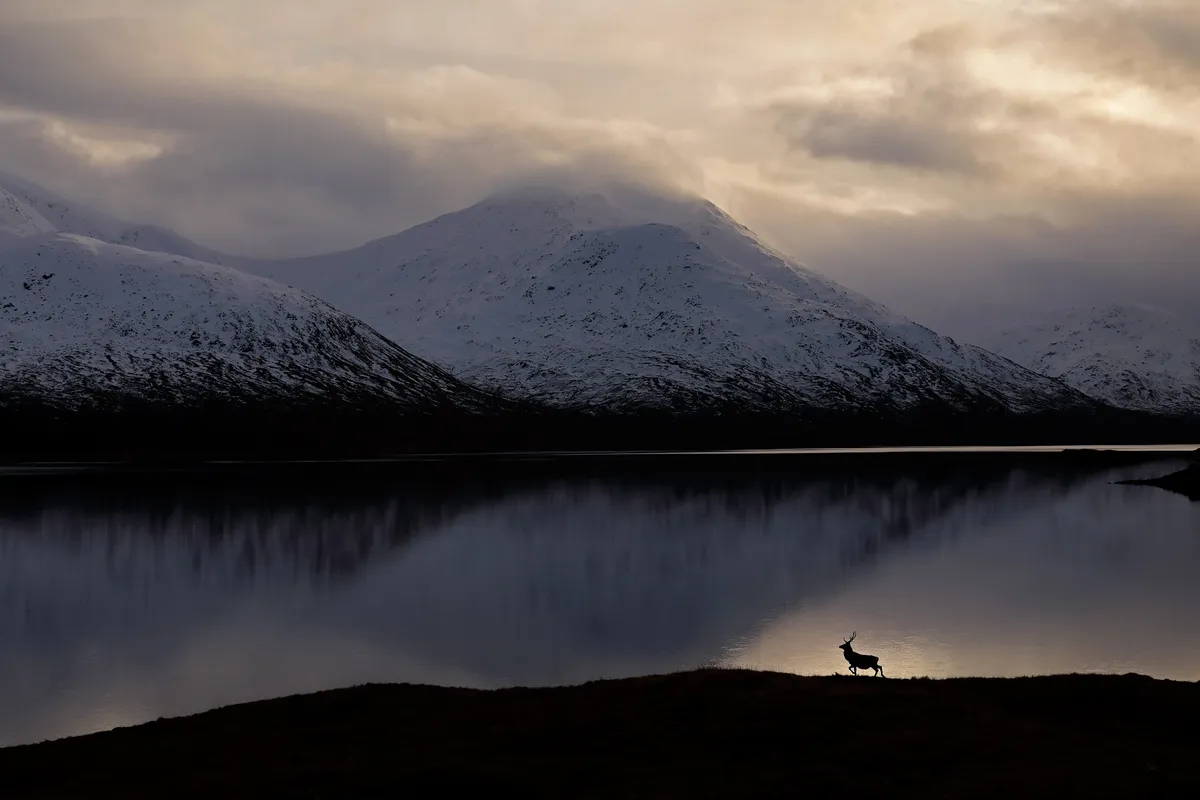
Stag by the Loch Side by Neil McIntyre
"This stunning location is one I visit frequently with the very hope that I might get opportunities just like this. It’s a wide glen with a loch, spectacular mountain backdrops and, of course, the resident deer. On this occasion, I noticed this stag moving along the side of the loch, but I wanted him against a bright patch in the scene. There was just such an area, albeit very small, and he was heading in that direction. I moved into position and waited until he made his way along the ridge; sure enough, he walked right through the light patch."
Tech: Canon 5D Mark IV with Canon 70-300mm f/4-5.6 lens. 81mm; 1/2,000th second; f/11; ISO 400.
RSPB Young British Wildlife Photographer of the year winners
Overall Winner and and 15-17 Years Winner
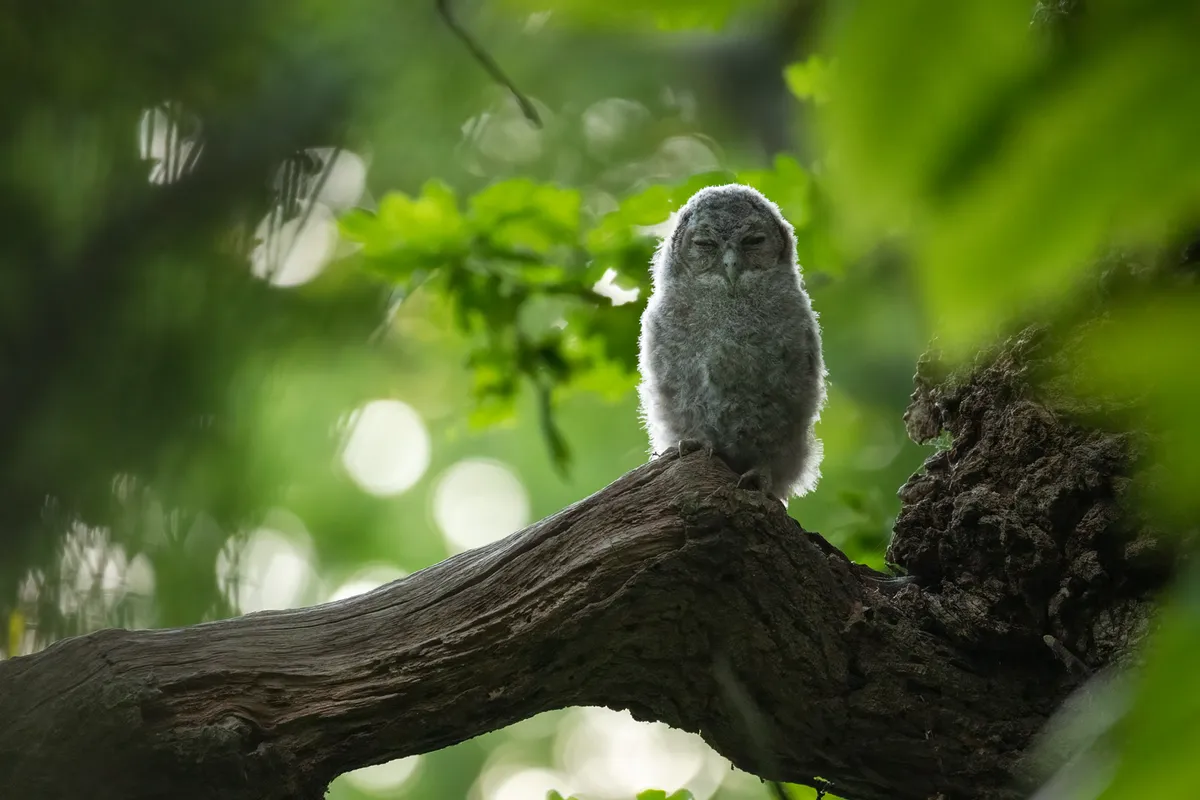
Branching Out by Billy Evans-Freke
"I was sitting outside when I heard some blackbirds going mental in the woodland next to my house. I went in to have a look, as I knew that meant there was a tawny owl out and about. Whilst searching for this elusive owl, however, I heard a high-pitched squeak. My heart leapt into action as I knew that this meant that somewhere nearby was a tawny owlet! After ten minutes or so, I had got closer to the owlet but still hadn’t spotted it. Then I suddenly caught a white ball of fluff in the corner of my eye. I manoeuvred myself into a better position so that I had a nicer background and started taking shots."
Tech: Canon R6 with Sigma 150-600mm f/5-6.3 lens. 600mm; 1/100th second; f/6.3; ISO 6,400.
12-14 Years winner
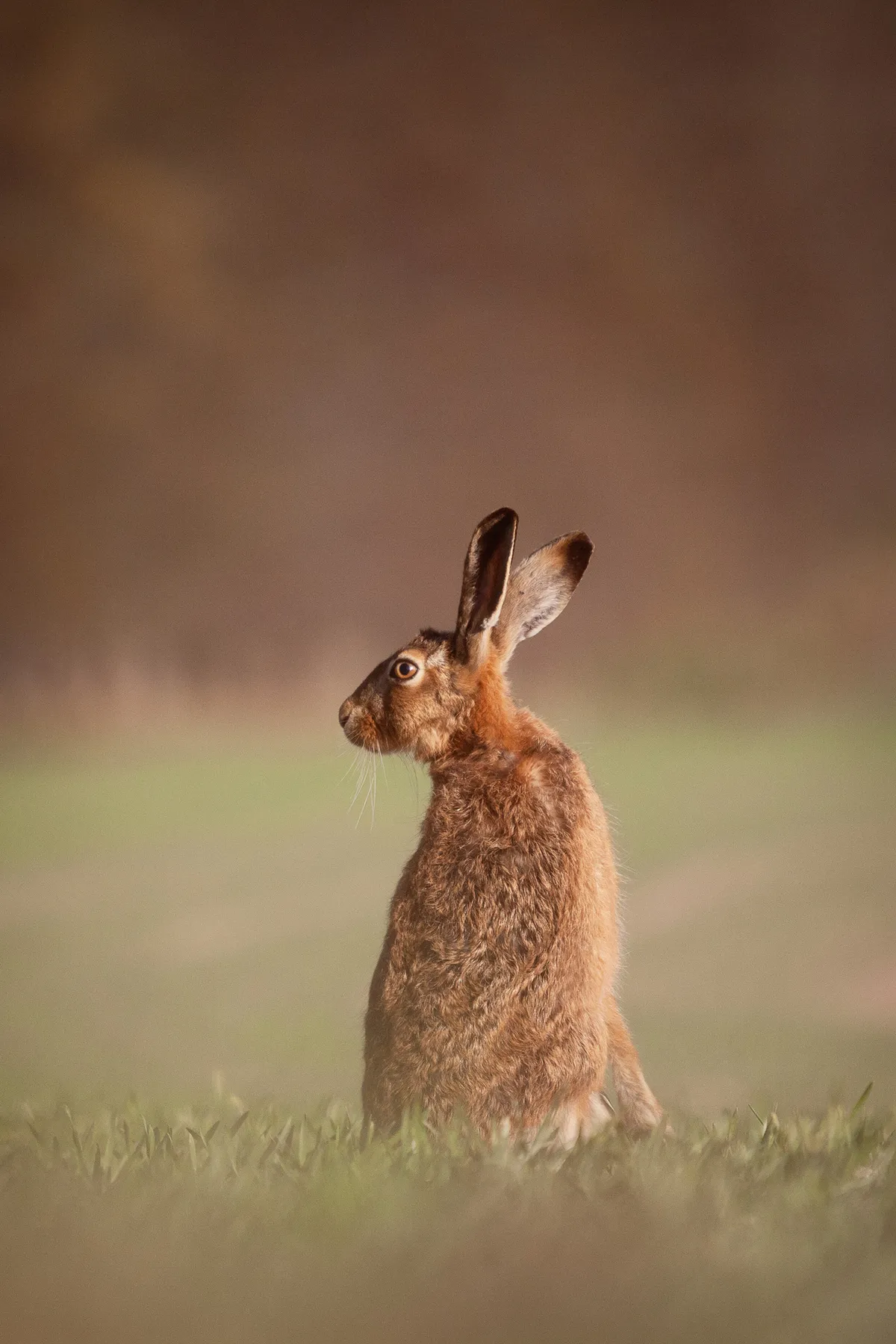
I love hares, they are easily one of my favorite animals. I made it my challenge to get a portrait of a hare and see them box. I had spent a lot of time out in the fields watching different individual groups, learning about their behaviour. One afternoon, I went to my best spot and waited. I spotted the hares boxing on the other side of the valley, then this one came to the field margin to rest. Later, he came out to eat the young barley, then looked over his shoulder towards me and I got this shot!
Tech: Canon 5D Mark II with Sigma 100-400mm f/5-6.3 lens. 400mm; 1/2,500th second; f/6.3; ISO 800.
11 and Under
Vine Wevill by Wilbur King
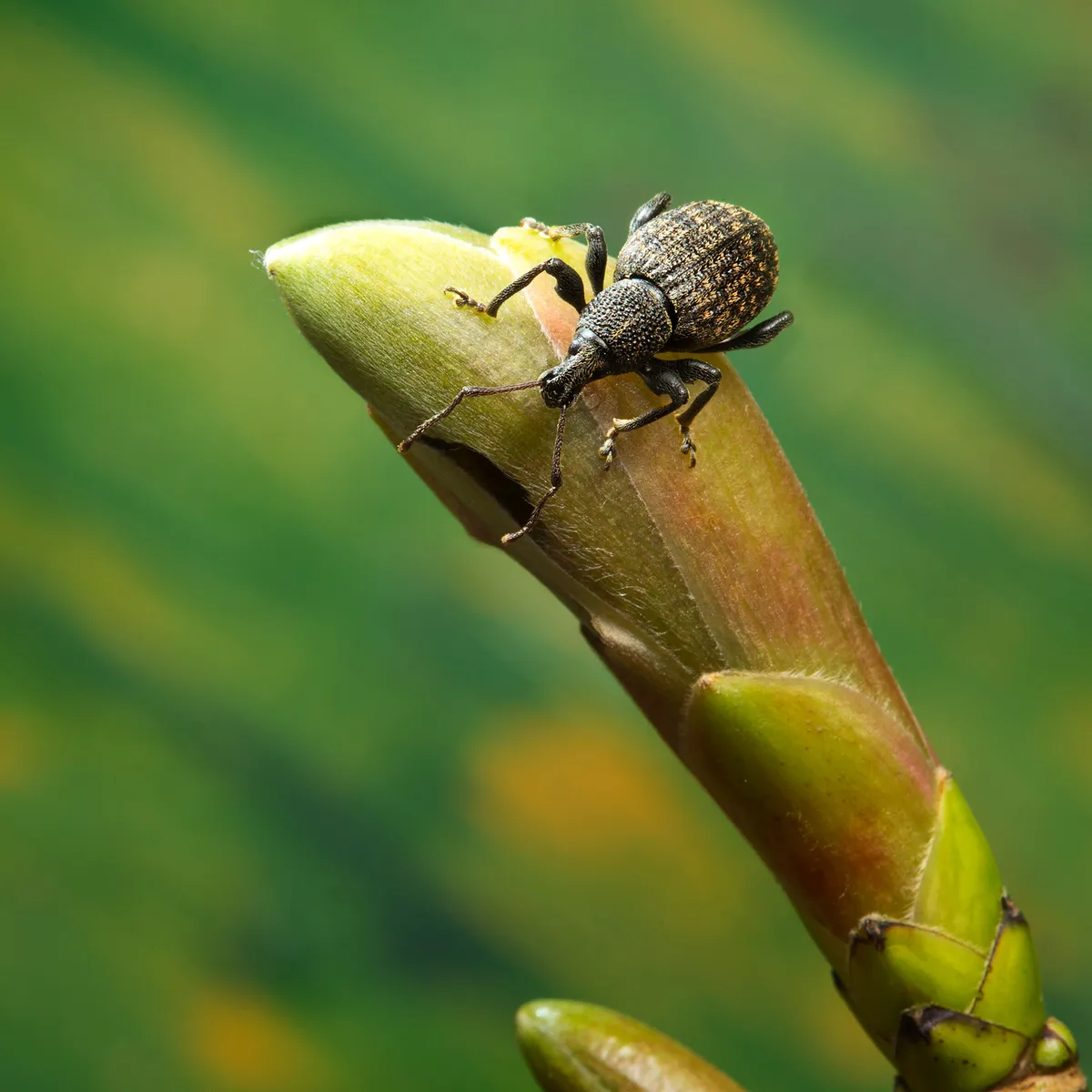
"When I was staying at my nanny and grandad’s house I kept finding vine weevils coming from a pot plant. Grandad helped me set up the camera and flash so I could take this photo."
Tech: Canon 5D Mark III with Canon 100mm f/2.8 Macro lens. 100mm; 1/160th second; f/16; ISO 160.
The British Wildlife Photography Awards (BWPA) is a revered showcase of nature photography in Britain and a crucial reminder of what value our woodlands, wetlands and other ecosystems still hold.
“The talented photographers in this year’s competition have given us an exceptional window into Britain's nature,” says Will Nicholls, Director of BWPA. “It’s an important reminder of the wildlife and wild spaces that still remain in the UK, and are in need of our care and protection.”
All awarded images are published by Bird Eye Books in a hard-back coffee-table book, which is now available online at bwpawards.org, with a foreword by Dame Judi Dench.
The 2024 competition is now open for entries at bwpawards.org, and invites photographers of all experience levels to submit their photos of Britain’s nature at its best.